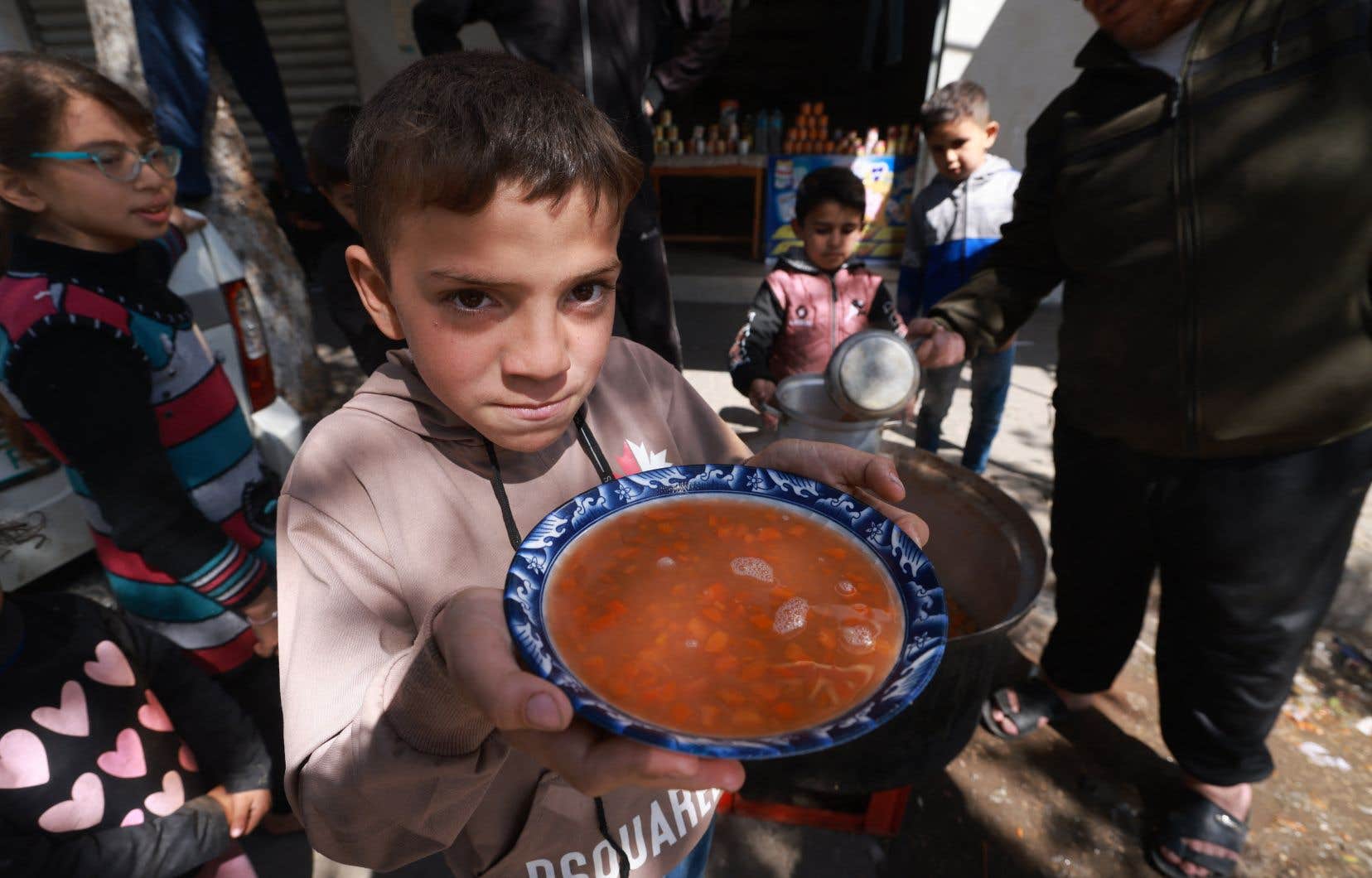Negotiations between Hamas and international mediators continued Tuesday in Cairo in the hope of reaching a truce in the Gaza Strip before Ramadan after almost five months of war between Israel and the Palestinian Islamist movement.
Israeli bombardments once again targeted the besieged Palestinian territory, notably the towns of Rafah and Khan Younes in the south, killing a total of 97 people in 24 hours, according to the Hamas Ministry of Health.
The Egyptian, American and Qatari mediators are meanwhile trying to extract a compromise from the two camps, in order to obtain a truce agreement before the start of Ramadan, on March 10 or 11.
Such an agreement would allow the release of hostages held in Gaza in exchange for Palestinian prisoners held by Israel, but no progress has been announced so far.
“Difficult” discussions continued Tuesday in Cairo between representatives of Egypt, the United States, Hamas and Qatar, but without an Israeli representative, announced the AlQahera News channel, close to the Egyptian intelligence services, citing a senior official.
The United States raises its voice
The United States, Israel’s main supporter, is increasingly demanding a ceasefire in the face of the humanitarian catastrophe that the war has caused in the Gaza Strip.
US Vice President Kamala Harris on Monday called on Hamas “to accept the conditions that are on the table for a release of the hostages which would result in an immediate six-week ceasefire and allow for an increase in humanitarian aid “.
But Hamas notably demands a definitive ceasefire before any agreement.
“There will be no discussions with the enemy on a prisoner exchange operation until there is a cease-fire, a withdrawal of the occupying army (Israeli, Editor’s note). ), reconstruction and a return of the displaced to their homes,” a senior Hamas official, Mahmoud Mardawi, told AFP on Tuesday.
Israel rejects these conditions, saying it wants to continue its offensive until the Islamist movement is eliminated, and demands, according to media reports, that Hamas provide it with a precise list of hostages held in Gaza.
A senior Hamas official told AFP on Monday that he did not know “who is alive or dead” among the hostages held in the Gaza Strip.
White flags
The war was sparked on October 7 by an attack by Hamas commandos infiltrated into southern Israel from Gaza, which resulted in the deaths of at least 1,160 people, most of them civilians, according to a tally by the AFP produced from official Israeli data.
Around 250 people were kidnapped and taken to the Gaza Strip, where 130 hostages are still held, 31 of whom are believed to have died, according to Israel.
In retaliation, Israel vowed to annihilate Hamas, in power in Gaza since 2007, which it considers a terrorist organization along with the United States and the European Union.
His army launched an offensive which has so far left 30,631 dead, mostly civilians, according to the Islamist movement’s Ministry of Health.
To achieve “total victory”, Israel announced that it was preparing a ground offensive on Rafah, a town located in the far south of the Gaza Strip, against the closed border with Egypt, where there are massed troops, according to the UN , nearly a million and a half Palestinians.
Rafah was once again bombarded during the night and several strikes targeted Khan Younes, a few kilometers further north, where ground fighting continues, according to an AFP journalist in the Gaza Strip.
These strikes hit the area around the European Hospital, in the Hamad district. Tuesday morning, women were fleeing Khan Younes, transformed into a field of ruins, carrying white flags as they passed in front of Israeli tanks, according to AFP images.
“They destroyed the house without warning. The neighborhood turned into a fiery hell,” a survivor, Abdullah al-Amour, told AFP after a strike on a house that left 16 people dead, including a newborn, according to the Ministry of Defense. Health of Hamas.
“The Seeds of Hate”
In the north, according to the Hamas health ministry and witnesses, Israeli soldiers opened fire Tuesday on a hungry crowd waiting for an aid distribution, wounding people.
Witnesses told AFP that hundreds of people rushed onto a convoy of 17 trucks loaded with flour arriving at an intersection in southern Gaza City, and soldiers fired.
The army has not confirmed this information.
On February 29, a stampede accompanied by Israeli fire during an aid distribution left dozens of people dead in the same city.
According to the UN, famine is “almost inevitable” for 2.2 million inhabitants of Gaza, the vast majority of the population, with humanitarian aid only arriving in trickles while the needs are immense.
The Jordanian army announced Tuesday that it had carried out its largest humanitarian aid airdrop operation in northern Gaza since the start of the war, in cooperation with the United States, France and Egypt.
The catastrophic humanitarian situation is aggravated by tensions between the United Nations agency for Palestinian refugees (UNRWA) and Israel, which is calling for its dismantling. Israel accuses this agency of employing “more than 450 terrorists” from Hamas and other organizations in Gaza.
Dismantling UNRWA would lead to the sacrifice of “an entire generation of children” and “sowing the seeds of hatred,” the agency’s boss, Philippe Lazzarini, warned on Monday.
UNRWA on Monday accused the Israeli authorities of having committed acts of “torture” against some of its employees arrested in the Gaza Strip since October 7.
A UN report also concluded on Monday that there were “good reasons to believe” that victims of October 7 were raped, as were certain hostages. Hamas “rejected” this report on Tuesday.
